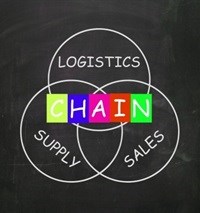
Top stories



ESG & SustainabilityA Christmas restored – How Inmed South Africa’s social employment initiative is changing lives
Inmed South Africa 16 hours



More news







Supply Chains are becoming more extended and complex with a consequent increase in risk and the need for resilience. There are multiple data sources making it difficult to manage and measure end-to-end processes and metrics. Aligning priorities through integrated planning remains pivotal but there is an explosion of data available that needs to be incorporated and the value extracted to understand how supply-demand issues impact profit and revenue targets, says David Telford, senior director, sector group and industry partner lead at Qlik.

New technology will provide greater supply chain transparency. Strategic supplier engagement will continue to be important as a way of reducing costs and mitigating risk. Effective supply chain management can be either a compelling competitive differentiator or conversely a source of risk, cost and poor customer service.
Organisations are looking to enable better and more consistent decision making across complex processes with diverse systems and data. Many are leveraging business intelligence (BI) platforms to give them the capability to make decisions across the organisation, including environments where mobility and access to decision-critical information on the go are crucial. Putting the information in the hands of the people on the front line - those managing supply chain processes, is key to enabling decision-making at the point of decision. But this requires synchronising an enormous amount of data that comes from many systems and sources in a way that it can be easily consumed by people who need to act on the insights.
Most organisations are managing increasingly complex supply chains. The need for agility has never been greater; customer demands are increasing, but there is no corresponding opportunity to recover the costs; this means that organisations must identify efficiencies to fund growth.
Despite constantly changing customer demands and shorter product lifecycles, strong opportunities exist for innovative companies. One is to institutionalise the concept of closer collaboration between trading partners.
Today analytics platforms are enabling companies to quickly and affordably gain real-time visibility into supply chain performance, providing the agility needed to capitalise on today's rapidly evolving business environment. The key is finding a platform that enables collaborative analytics, allowing users to draw information from verified enterprise data systems as well as outside assets, capturing their thoughts in an organised fashion, and then sharing those thoughts - scaling and accelerating conversations that deliver real business value. It provides built-in tools for real-time dialogue, allows for shared insight, presentation of findings, enables consensus building, and achieves greater speed to action.
The reality is participants aren't just looking at their own data or analysis; they want to consider all the data, drill into it, see where it came from, and raise additional points to consider. This collaborative approach provides accountability, easily answering the question, "How did you come to that conclusion?" The factors that went into a decision are captured and traceable and can be easily presented to peers, so lessons really can be learned.
Collaborative analytics can give companies a disruptive competitive edge. By capturing conversations that lead to insight, they can accelerate alignment and drives the most accurate, vetted decisions possible.
• It transforms all your decisions: Analytics must capture and support the natural process by which decisions are made, supplementing it with the ability to ask questions that come up along the way. The decisions are collaborative and involve the right people and the right data. The key lies in capturing ideas and incorporating them into a workflow that leads to a quick, confident decision
• Users freely manipulate data: Business people need to be able to search, visualise, remix, and reassemble data on the fly. In order to make decisions, business users need to freely explore and interrogate data without any assistance from the IT department.
• Sharing is real-time and secure: In order to support data-driven collaborative decisions, business people need to share data securely about a specific product, service, region, or organisation. These analytics need to be locked down so that only those with rights to the data can view it and collaborate on it. The common practice of emailing a document around and waiting for responses from multiple stakeholders will become a thing of the past. Increasingly, sharing must happen in real-time.
• Decision making is collaborative: Imagine if three people each asked a question of the same set of data. If each pursued the question individually, they might get three separate answers, but if the question is asked collaboratively, the answer might be different still - in other words, the whole is greater than the sum of its parts.
